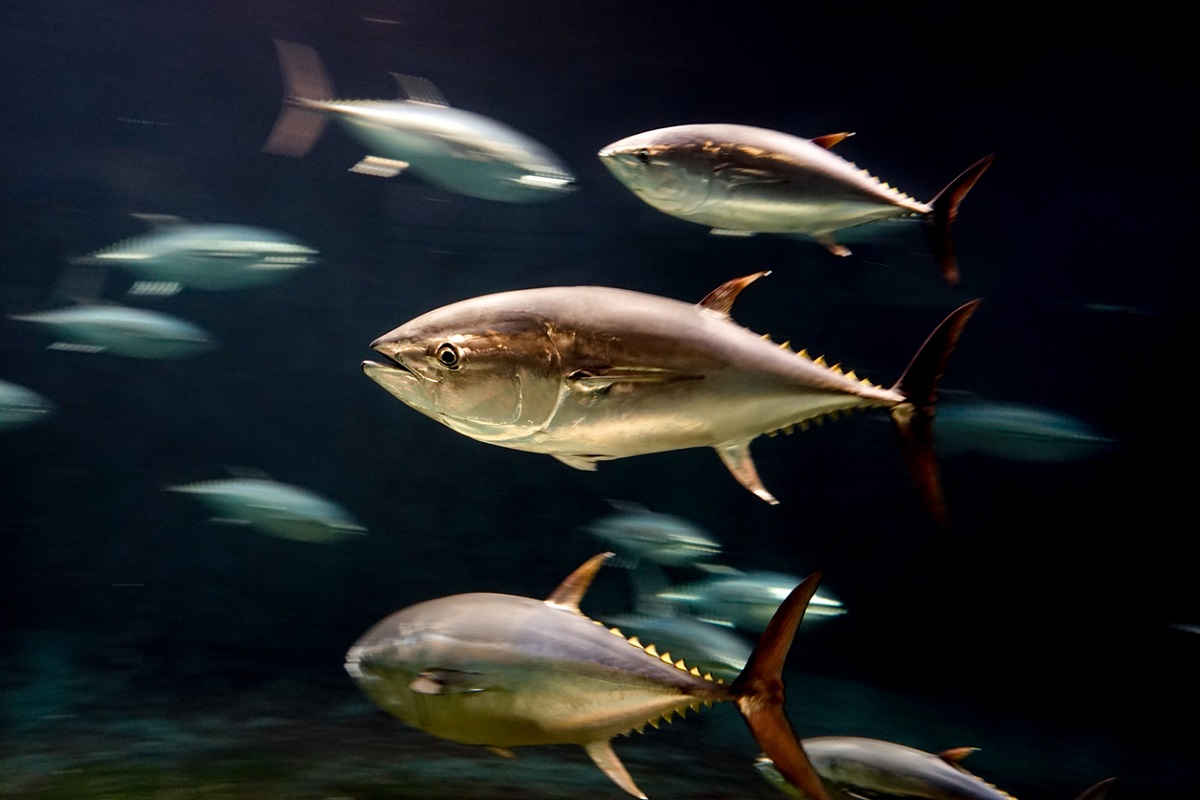
Scientists Use TALENs to Edit Tuna
December 9, 2021| |
Japanese scientists were successful in using transcription activator-like effector nucleases (TALENs) to induce small mutations with major changes in phenotype of the kawakawa (Euthynnus affinis). Their study, which demonstrated the disruption of the gene slc24a5 using Platinum TALENs in the fish, is the first to use genome editing technology to study color variation in tuna species.
The scientists designed their study to present a simple and efficient gene knockout using TALENs in kawawa using the gene slc24a5. The gene is responsible for the golden phenotype in kawakawa, which is a recessive trait. They examined the gene's expression and functional differences between two TALENs, +153/+47 and +136/+63, and the target slc24a5. Using real-time PCR, the scientists were able to observe developmental changes in slc24a5 transcripts during the early-stage fish embryos. Further investigation led to the construction of four TALENs using Platinum TALEN which were evaluated in vitro by a single-strand annealing assay, then evaluated again in vivo by injecting TALEN mRNAs in the two-cell stage of the zygote. The results showed mutants with mosaic patterns in the retinal pigment and fewer melanin pigments in their bodies as compared to the control tunas. These prove that the gene's association with melanin pigment formation. Lastly, the scientists used a heteroduplex mobility assay to which the genome sequencer confirmed the TALEN-induced mutations of substitution, insertion, and deletion at an endogenous locus.
To sum up, disrupting the slc24a5 gene using TALENs appears to have changed the order of the melanin disposition in eye and skin of the mutant tunas when compared to the control tunas. Thus, the scientists were able to establish a genome editing technique using TALENs in a model marine organism that is suitable for studying tuna species, with the potential for efficient aquaculture production by improving growth, survival, and disease resistance.
Learn more from the Journal of Marine Science and Engineering.
| |
You might also like:
- Pocket K No. 59: Plant Breeding Innovation: TALENs
- What are TALENs?
- New Pocket K on TALENs Published
Biotech Updates is a weekly newsletter of ISAAA, a not-for-profit organization. It is distributed for free to over 22,000 subscribers worldwide to inform them about the key developments in biosciences, especially in biotechnology. Your support will help us in our mission to feed the world with knowledge. You can help by donating as little as $10.
-
See more articles:
-
News from Around the World
- USDA FAS Reports Biotech Updates in Pakistan and Korea
- International Collaboration Brings Wild Wheat's Untapped Diversity into Elite Lines
- Global Database Reveals Humans are Biggest Driver of Plant Homogenization
- Thailand Presents Impressive Line-Up of Biotech Crop R&D During ISAAA's Latest Webinar
- FSANZ Opens Call for Comments on GM Wheat Product Importation
- ISAAA to Release Primer on Genome Editing
- Microbiome Study Provides Strategies for Healthy and Climate-Resistant Fruit and Vegetables
-
Research Highlights
- Suppressing Jasmonate Signaling Attenuation Confers Stress Tolerance in Arabidopsis
-
Plant
- University of Texas Scientists Discover Potential New Gene Editing Tools
- Scientists Use TALENs to Edit Tuna
- Researchers Edit Genomes of Microbes Growing in a Community of Different Species
-
Health
- Omicron Variant Could Weaken COVID Vaccine Protection
-
Read the latest: - Biotech Updates (December 10, 2025)
- Gene Editing Supplement (November 26, 2025)
- Gene Drive Supplement (February 22, 2023)
-
Subscribe to BU: - Share
- Tweet

